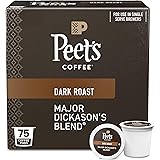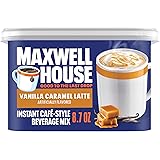The quest for an exceptional cup of coffee at home often feels like a complex journey, filled with specialized equipment and obscure barista secrets. Fortunately, elevating your daily brew doesn’t require a professional setup or years of training. The accompanying video by seasoned barista and coffee shop owner Mike offers invaluable “coffee life hacks” designed to enhance your home coffee experience. These practical tips cover everything from bean selection to brewing techniques, helping you unlock the full potential of your coffee, even on a budget. This comprehensive guide expands upon Mike’s expert advice, providing deeper insights and actionable strategies to help you achieve truly outstanding coffee at home.
Mastering Your Brew: Top 10 Tips for Better Coffee at Home
Achieving café-quality coffee within your own kitchen is entirely within reach with the right knowledge and a few mindful adjustments. Mike’s top 10 tips provide a fantastic foundation for any home coffee enthusiast looking to improve their daily ritual. We delve deeper into each recommendation, offering additional context and practical steps to ensure every cup you brew is a masterpiece.
1. Prioritize Fresh Coffee Beans for Superior Flavor
The foundation of any great coffee lies unequivocally in the freshness of its beans. Mike emphasizes avoiding generic store brands in favor of freshly roasted beans, ideally from a “third-wave specialty roaster.” This recommendation is paramount because coffee, like fresh produce, degrades over time, losing its vibrant aromas and nuanced flavors.
Third-wave coffee refers to a movement that views coffee as an artisanal product, focusing on high-quality beans, precise roasting, and meticulous brewing methods. These roasters typically provide a “roast date” on their packaging, which is crucial for assessing freshness. Aim to purchase beans roasted within the last two to three weeks for optimal flavor extraction. Stale beans produce flat, lifeless coffee, regardless of your brewing expertise.
2. Grind Your Coffee Beans Immediately Before Brewing
Pre-ground coffee loses its aromatic compounds rapidly when exposed to air, significantly diminishing the final taste in your cup. Mike’s second vital tip highlights the importance of grinding your coffee beans at home, ideally mere seconds before you begin the brewing process. This practice ensures maximum freshness and allows you to control the grind size, which is critical for different brewing methods.
Different brewing techniques require specific grind consistencies; for example, espresso demands a very fine grind, while a French press benefits from a coarse grind. If you lack a home grinder, the video suggests utilizing grinders at local stores or even a blender as an emergency solution. However, investing in a quality burr grinder provides the most consistent and flavorful results for your home coffee journey, offering superior control over particle size uniformity.
3. Emergency Grinding Solutions: Using a Blender
When a dedicated coffee grinder is unavailable, Mike introduces an ingenious emergency hack: using a regular kitchen blender. While certainly not ideal for fine grinds like espresso, a blender can adequately process beans for drip coffee, pour-over, or French press methods. This temporary solution can save your morning when your usual grinder fails or you are traveling without specialized equipment.
To achieve the best results with a blender, use short, pulsing bursts rather than continuous blending to avoid overheating the beans, which can negatively impact flavor. Additionally, shaking the blender between pulses helps ensure a more even grind, albeit still less uniform than a burr grinder. Remember, this method is a stop-gap measure for better coffee at home, not a permanent replacement for a proper coffee grinder.
4. Optimize Water Quality and Temperature for Brewing
Water constitutes over 98% of your coffee, making its quality profoundly impactful on the final taste profile. Mike strongly emphasizes the critical role of high-quality water, noting that tap water suitability varies significantly by region. Hard water, rich in dissolved minerals, can lead to over-extraction and a chalky taste, while overly soft water may result in under-extraction and a bland cup.
For consistent excellence, considering filtered or bottled water is often beneficial, with some enthusiasts even mimicking specific mineral profiles. The video also highlights the importance of water temperature, recommending a precise range of 90 to 92 degrees Celsius (194 to 197 Fahrenheit) for optimal extraction. Boiling water immediately poured over grounds can scald the coffee, leading to bitterness, while water that is too cool will under-extract, producing weak coffee. Using a temperature-controlled kettle can precisely achieve this ideal range for superior flavor development in your home coffee.
5. Precision Weighing: Coffee-to-Water Ratios
Consistency is a hallmark of exceptional coffee, and precise measurement is key to achieving it every time. Mike advocates for weighing both your coffee beans and water, rather than relying on volumetric measurements like scoops. A simple kitchen scale, as suggested in the video, offers an affordable and highly accurate method for this precision.
For filter or drip coffee, a widely accepted starting point is a 1:10 ratio—meaning one part coffee to ten parts water. For example, if you use 20 grams of coffee, you would then use 200 grams of water. This precise ratio ensures a balanced extraction, allowing you to consistently reproduce fantastic results and fine-tune your recipe based on personal preference and bean characteristics, leading to noticeably better coffee at home.
6. Elevate Your Milk-Based Drinks with High-Quality Milk
For those who enjoy lattes, cappuccinos, or flat whites, the quality of your milk is just as crucial as the coffee itself. Mike’s sixth tip focuses on using high-quality whole milk for the most delicious and satisfying results. Whole milk’s fat content provides a richer flavor and superior texture when steamed or frothed, creating a velvety mouthfeel that complements the coffee beautifully.
While various milk alternatives are available, whole dairy milk generally offers the best performance for frothing due to its protein and fat composition. The natural sugars in milk also undergo a transformation when heated, contributing to a pleasant sweetness that enhances your coffee beverage. Experimenting with different brands can reveal subtle differences, guiding you toward the perfect accompaniment for your home coffee concoctions.
7. Froth Milk Without a Steam Wand: The French Press Hack
Many home coffee enthusiasts desire creamy, frothed milk but lack a dedicated espresso machine with a steam wand. Mike presents an ingenious and accessible solution: using a French press. This method transforms a simple brewing device into an effective milk frother, enabling you to create lattes and cappuccinos with ease.
Simply heat your desired amount of milk (microwave or stovetop) to around 60-65°C (140-150°F), then pour it into your French press. Plunge the filter rapidly up and down for 30-60 seconds until the milk doubles in volume and achieves a smooth, microfoam consistency. This technique empowers you to enjoy luxurious milk-based coffee at home without significant investment in specialized equipment.
8. Effortless Cold Brew Coffee at Home
Cold brew coffee has gained immense popularity for its smooth, low-acid profile, and Mike confirms that it is surprisingly simple to make in your own kitchen. The method involves steeping coarsely ground coffee in cold water for an extended period, typically around 12 hours, before filtering. This slow, cool extraction yields a concentrate that is inherently less bitter and acidic than hot-brewed coffee, making it very gentle on the stomach.
For a unique twist, Mike shares a “pro tip” for making nitro cold brew using a whipping siphon and two nitrous oxide capsules, steeping for about two hours in the fridge. Cold brew also boasts a long shelf life, lasting for days in the refrigerator, making it perfect for preparing in advance for gatherings or simply enjoying throughout the week. This versatility makes cold brew an excellent addition to your repertoire of better coffee at home.
9. Creative Cold Brew Cocktails and Mocktails
Beyond its traditional consumption, cold brew serves as an exceptional base for innovative beverages. Mike provides a fantastic recipe for a refreshing cold brew cocktail: combining one part cold brew, one part tonic water, and a splash of gin, garnished with rosemary sprigs. The bitterness of tonic and the botanical notes of gin beautifully complement the rich coffee flavor, creating a sophisticated drink perfect for entertaining.
For an alcohol-free alternative, simply omit the gin. Adding a dash of simple syrup, perhaps infused with mint, can introduce a delightful sweetness and complexity. This flexibility demonstrates how homemade cold brew can elevate your beverage game, offering exciting options for both alcoholic and non-alcoholic drinks, ensuring your home coffee experience extends far beyond the morning cup.
10. Repurposing Coffee Grounds: Sustainable Home Hacks
Mike’s final tip for better coffee at home doesn’t involve drinking it at all, but rather making the most of your spent coffee grounds. Instead of discarding them, these versatile grounds can be repurposed for various household and personal care applications. This practice aligns with sustainable living and offers surprising benefits, reducing waste while utilizing a readily available resource.
One popular use is creating a DIY body scrub by mixing grounds with coconut oil, providing exfoliation and a stimulating aroma. Furthermore, coffee grounds are excellent natural deodorizers; placing them in the sink drain and flushing with hot water effectively eliminates odors and residue. They can also be added to compost, used as a natural pest deterrent in gardens, or even rubbed on hands to neutralize strong food odors like garlic or onion. Exploring these uses enhances your overall home coffee lifestyle.







